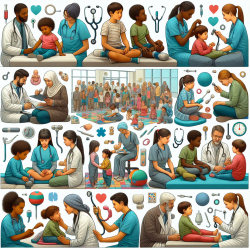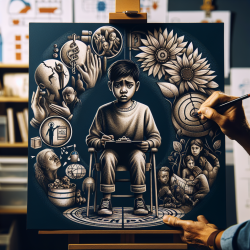Understanding Dual Disorders: A Pathway to Improved Mental Health Outcomes
The complexities surrounding the coexistence of addictive and other mental disorders have long posed significant challenges in the field of psychiatry. The lack of a standardized term has contributed to confusion, stigma, and fragmented treatment approaches. However, recent research suggests that adopting the term "Dual Disorder" could be a pivotal step towards harmonizing clinical and research efforts, ultimately leading to better patient outcomes.
The Case for "Dual Disorder"
In the research article titled "Addictive and other mental disorders: a call for a standardized definition of dual disorders," the authors argue for the adoption of the term "Dual Disorder" to describe the coexistence of addictive and other mental disorders. This term is not only more accurate but also less stigmatizing, helping to bridge the gap between different clinical and research paradigms.
The World Association on Dual Disorders (WADD) has proposed this term to standardize the language used in both clinical settings and research. By adopting a unified term, practitioners can improve communication, reduce stigma, and enhance the integration of mental health and addiction services.
Implications for Practitioners
For practitioners, the adoption of "Dual Disorder" as a standard term offers several benefits:
- Improved Diagnosis: A standardized term helps in accurately diagnosing patients with coexisting disorders, reducing the chances of misdiagnosis.
- Integrated Treatment: Understanding the interconnected nature of dual disorders allows for more comprehensive and integrated treatment plans, addressing both addictive and other mental health issues simultaneously.
- Reduced Stigma: Using a less stigmatizing term can encourage more individuals to seek help, knowing they won't be labeled with outdated or derogatory terms.
Encouraging Further Research
While the adoption of "Dual Disorder" is a significant step forward, it also opens up new avenues for research. Practitioners are encouraged to explore the following areas:
- Etiological Overlaps: Investigate the common contributing factors and bidirectional relationships between paired conditions.
- Transdiagnostic Constructs: Examine how maladaptive emotion regulation and other transdiagnostic constructs play a role in dual disorders.
- Personalized Treatment: Develop personalized assessment and treatment strategies that consider the unique needs of individuals with dual disorders.
Conclusion
The adoption of "Dual Disorder" as a standardized term represents a crucial step towards improving mental health outcomes. By embracing this term, practitioners can enhance their diagnostic accuracy, treatment integration, and patient engagement. As we move forward, continued research and collaboration will be essential in refining our understanding and treatment of dual disorders.
To read the original research paper, please follow this link: Addictive and other mental disorders: a call for a standardized definition of dual disorders.










